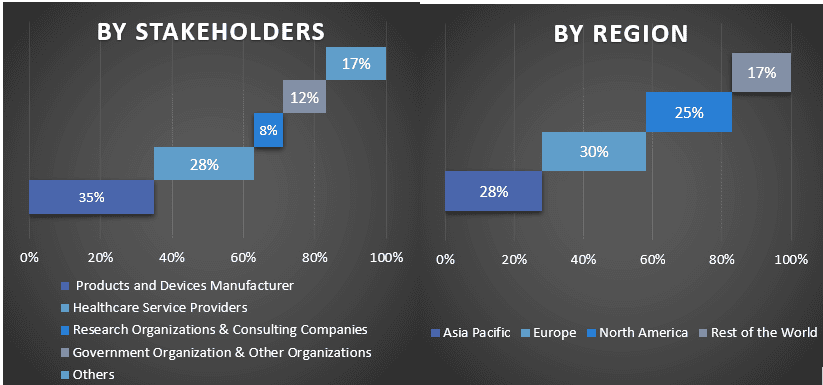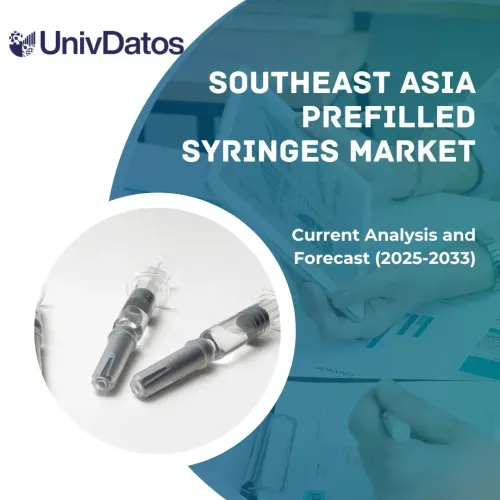- Home
- About Us
- Industry
- Services
- Reading
- Contact Us
Blood Transfusion Diagnostics Market: Current Analysis and Forecast (2021-2027)
Emphasis on Product (Reagents & Kits, Instruments); Application (Blood Grouping, Disease Screening); Emphasis on End-User (Hospitals, Blood Banks, Diagnostic Laboratories, Others); and Region/Country

Blood transfusion diagnostics is expected to witness a CAGR of around ~7% during the forecast period (2021–2027). The key factors responsible for the growth of the market include the growing geriatric population, increasing prevalence of surgeries worldwide, high rate of injuries and trauma cases, and surging prevalence of anemia, leukemia, or kidney disease. Blood transfusion is usually done as a lifesaving operation to replace blood cells or blood products lost through severe bleeding, blood loss during surgery, or to increase the platelet count in the patient. According to the Community Blood Center, In America, 4.5 million people need blood transfusion each year. According to the World Health Organization (WHO), in low-income countries, up to 54 % of blood transfusions are given to children under 5 years of age, whereas in high-income countries, the most frequently transfused patient group is over 60 years of age, accounting for up to 76% of all transfusions. The rising geriatric population is also expected to drive the growth of the blood transfusion diagnostic market during the forecast period. Moreover, in the APAC region, there is a steady increase in the number of surgeries, accidents, blood donation centers, and blood donors, and a rise in awareness about blood donation will drive the market growth during the forecast period.
Immucor, Inc., Ortho Clinical Diagnostics, Abbott, Bio-Rad Laboratories, F. Hoffmann-La Roche AG, Quotient Limited, BAG Healthcare GmbH, DiaSorin S.P.A., Danaher, and BIO KIT (Werfen) are some of the key players in the market. Several M&As along with partnerships have been undertaken by these players to facilitate customers with hi-tech and innovative products/technologies.
Insights Presented in the Report
“Amongst Product, reagents and kits category accounted for the majority share in the market in 2020”
Based on product type, the blood transfusion diagnostics market is segmented into Reagents & Kits, and Instruments. In 2020, The reagents and kits category held the largest share and is anticipated to witness a considerable growth rate over the forecast period. The availability of technologically advanced donor screening analyzers will drive the growth of this segment. In addition, the rising availability of rapid diagnostic kits for safe blood transfusion is expected to boost the market growth. Furthermore, the rising prevalence of injuries and accidents across the world is also a major factor in the growth of this segment. According to CDC, every year an average of around 6 million car accident cases occurs in the U.S. Among them, approximately 3 million people are injured. Moreover, surgeries such as post-cardiopulmonary bypass, neurosurgery, posterior eye surgery, and chronic bleeding disorders also require platelet transfusions.
“Amongst Application, Disease Screening category is expected to witness highest CAGR during the forecast period”
Based on application type, the blood transfusion diagnostics market has been segmented into blood grouping, and disease screening. In 2020, the Disease Screening category held the largest share and is anticipated to witness a considerable growth rate over the forecast period. This can be due to a high number of transfusion-transmitted infection (TTI) cases, rising safety screening of donated blood, maintaining safe transfusion, rising technological advancements, and wide products offered by key players in the market. For instance, blood transfusion is a base in the treatment of anemic patients. Thus, the growing elderly population with iron deficiency is also supporting the market growth. According to World Health Organization (WHO), Anemia is a serious global public health problem that particularly affects young children and pregnant women. WHO estimates that 42% of children less than 5 years of age and 40% of pregnant women worldwide are anemic.
“Amongst End-User, blood banks category is expected to witness highest CAGR during the forecast period”
Based on end-users, the blood transfusion diagnostics market is segmented into hospitals, blood banks, diagnostic laboratories, and others. In 2020, the blood banks category dominated the blood transfusion diagnostics market and is expected to grow significantly in the upcoming years. The growth of this segment is due to rising surgical procedures, injuries, anemia, leukemia, and kidney failure treatment procedures. However, the blood bank segment is expected to grow in developing nations because of the geriatric population, and the increasing number of road accidents. Also, the increasing awareness of blood donation in developing countries is also one of the prominent factors due to which the blood bank segment is expected is grow in the forecast period.
“North America to witness significant growth during the forecast period”
Geographically, North America is expected to lead the blood transfusion diagnostics market throughout the analysis period. This can be attributed to the greater presence of industry players, high healthcare spending, and increase in research and development (R&D) activities in the region. Furthermore, an increase in the number of surgeries, a rising number of road accidents coupled with a surge in the number of cancer cases such as leukemia, lymphoma, and myeloma. These are some of the drivers of the North American blood transfusion diagnostics market. In addition, according to the Leukemia and Lymphoma Society (LLS), An estimated combined total of 186,400 people in the US are expected to be diagnosed with leukemia, lymphoma, or myeloma in 2021. and new cases of leukemia, lymphoma, and myeloma are expected to account for 9.8 percent of the estimated 1,898,160 new cancer cases that will be diagnosed in the US in 2021. moreover, increasing health awareness, high disposable income, favorable reimbursement policies, and well-established healthcare infrastructure are some of the key factors boosting the regional market.
Reasons to buy this report:
- The study includes market sizing and forecasting analysis validated by authenticated key industry experts.
- The report presents a quick review of overall industry performance at one glance.
- The report covers an in-depth analysis of prominent industry peers with a primary focus on key business financials, product portfolio, expansion strategies, and recent developments.
- Detailed examination of drivers, restraints, key trends, and opportunities prevailing in the industry.
- The study comprehensively covers the market across different segments.
- Deep dive regional level analysis of the industry.
Customization Options:
The blood transfusion diagnostics Market can further be customized as per the requirement or any other market segment. Besides this, UMI understands that you may have your own business needs, hence feel free to connect with us to get a report that completely suits your requirements.
Table of Content
Analyzing the historical market, estimating the current market, and forecasting the future market of the blood transfusion diagnostics market were the three major steps undertaken to create and analyze the adoption of blood transfusion diagnostics in major regions globally. Exhaustive secondary research was conducted to collect the historical market numbers and estimate the current market size. Secondly, to validate these insights, numerous findings and assumptions were taken into consideration. Moreover, exhaustive primary interviews were also conducted, with industry experts across the value chain of the blood transfusion diagnostics market. Post assumption and validation of market numbers through primary interviews, we employed a top-down/bottom-up approach to forecasting the complete market size. Thereafter, market breakdown and data triangulation methods were adopted to estimate and analyze the market size of segments and sub-segments of the industry pertains to. Detailed methodology is explained below:
Seek More Details About Research Methodology
Analysis of Historical Market Size
Step 1: In-Depth Study of Secondary Sources:
Detail secondary study was conducted to obtain the historical market size of the blood transfusion diagnostics market through company internal sources such as annual reports & financial statements, performance presentations, press releases, etc., and external sources including journals, news & articles, government publications, competitor publications, sector reports, third-party database, and other credible publications.
Step 2: Market Segmentation:
After obtaining the historical market size of the Blood Transfusion Diagnostics market, we conducted a detailed secondary analysis to gather historical market insights and share for different segments & sub-segments for major regions. Major segments are included in the report as product, application, and end-user. Further country-level analyses were conducted to evaluate the overall adoption of testing models in that region.
Step 3: Factor Analysis:
After acquiring the historical market size of different segments and sub-segments, we conducted a detailed factor analysis to estimate the current market size of the blood transfusion diagnostics market. Further, we conducted factor analysis using dependent and independent variables such as various products, applications, and end-user of Blood Transfusion Diagnostics. A thorough analysis was conducted for demand and supply-side scenarios considering top partnerships, mergers and acquisitions, business expansion, and product launches in the Blood Transfusion Diagnostics market sector across the globe.
Current Market Size Estimate & Forecast
Current Market Sizing: Based on actionable insights from the above 3 steps, we arrived at the current market size, key players in the Blood Transfusion Diagnostics Market, and market shares of the segments. All the required percentage shares split, and market breakdowns were determined using the above-mentioned secondary approach and were verified through primary interviews.
Estimation & Forecasting: For market estimation and forecast, weights were assigned to different factors including drivers & trends, restraints, and opportunities available for the stakeholders. After analyzing these factors, relevant forecasting techniques i.e., the top-down/bottom-up approach were applied to arrive at the market forecast about 2027 for different segments and sub-segments across the major markets globally. The research methodology adopted to estimate the market size encompasses:
- The industry’s market size, in terms of revenue (USD) and the adoption rate of the blood transfusion diagnostics market across the major markets domestically
- All percentage shares, splits, and breakdowns of market segments and sub-segments
- Key players in the blood transfusion diagnostics market in terms of solutions offered. Also, the growth strategies adopted by these players to compete in the fast-growing market
Market Size and Share Validation
Primary Research: In-depth interviews were conducted with the Key Opinion Leaders (KOLs) including Top Level Executives (CXO/VPs, Sales Head, Marketing Head, Operational Head, Regional Head, Country Head, etc.) across major regions. Primary research findings were then summarized, and statistical analysis was performed to prove the stated hypothesis. Inputs from primary research were consolidated with secondary findings, hence turning information into actionable insights.
Split of Primary Participants in Different Regions

Market Engineering
The data triangulation technique was employed to complete the overall market estimation and to arrive at precise statistical numbers for each segment and sub-segment of the blood transfusion diagnostics market. Data was split into several segments & sub-segments post studying various parameters and trends in the areas of offering and technique in the blood transfusion diagnostics market.
The main objective of the Blood Transfusion Diagnostics Market Study
The current & future market trends of the blood transfusion diagnostics market were pinpointed in the study. Investors can gain strategic insights to base their discretion for investments on the qualitative and quantitative analysis performed in the study. Current and future market trends determined the overall attractiveness of the market at a regional level, providing a platform for the industrial participant to exploit the untapped market to benefit from a first-mover advantage. Other quantitative goals of the studies include:
- Analyze the current and forecast market size of the blood transfusion diagnostics market in terms of value (USD). Also, analyze the current and forecast market size of different segments and sub-segments
- Segments in the study include areas of offering and technique.
- Define and analysis of the regulatory framework for the Blood Transfusion Diagnostics market industry.
- Analyze the value chain involved with the presence of various intermediaries, along with analyzing customer and competitor behaviors of the industry.
- Analyze the current and forecast market size of the Blood Transfusion Diagnostics market for the major region.
- Major countries of regions studied in the report include Asia Pacific, Europe, North America, and the Rest of the world.
- Company profiles of the blood transfusion diagnostics market and the growth strategies adopted by the market players to sustain in the fast-growing market
- Deep dive regional level analysis of the industry
Related Reports
Customers who bought this item also bought










